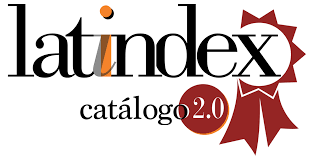Redes Sociales y ONG en Colombia ¿uso estratégico o respuesta a la tendencia?/Social Media and NGO in Colombia, strategic use or response to the trend?
DOI:
https://doi.org/10.5783/revrrpp.v9i18.607Keywords:
medios sociales, relaciones públicas, organización no gubernamental, estrategias de comunicación, redes sociales, comunicación digitalAbstract
Este artículo está centrado en los resultados de la observación de las redes sociales que utilizan 7 ONG en Medellín-Colombia y está enmarcado en la investigación “Colombia: ONG, Relaciones Públicas, recaudación de fondos y postconflicto”, cuyo objetivo es describir la realidad comunicativa de las ONG en Colombia a fin de determinar si están preparadas a nivel de gestión de las relaciones públicas para obtener los recursos financieros que les permitan cumplir su rol en el posconflicto colombiano. Inicialmente se trabajó en la construcción de un marco teórico que permitiera fundamentar los resultados y posterior discusión de éstos. Los cinco conceptos clave de este marco fueron: Comunicación, Organizaciones No Gubernamentales, comunicación estratégica, relaciones públicas y redes sociales. Posteriormente se hizo una observación con una ventana de tiempo de 5 semanas, comprendidas entre los meses de abril y mayo de 2018. Las características propias de los medios digitales, fueron el eje central del análisis de las publicaciones con las cuales se trabajó. Para esta segunda parte se tuvieron en cuenta 4 variables: ¿cuáles redes sociales utilizaban?, ¿qué tipo de contenido publicaban en ellas?, ¿cuál era la temática más recurrente en dichas publicaciones? y los parámetros de redacción. La metodología utilizada combinó lo cualitativo y lo cuantitativo. Dentro de las conclusiones se encontró una correlación baja entre la teoría sobre el uso estratégico de las redes sociales y lo que hacen estas organizaciones en la práctica.
Palabras clave: medios sociales, relaciones públicas, organización no gubernamental, estrategias de comunicación, redes sociales, comunicación digital
Abstract
This article focuses on the observation of social networks utilized by seven NGOs in Medellin-Colombia. It is a result of the research project "Colombia: NGOs, Public Relations, fundraising and post-conflict", whose objective was to describe the communicative reality of NGOs in Colombia, in order to determine whether they are prepared, at the level of public relations management, to obtain the financial resources needed to fulfill their expected role in the Colombian post-conflict.
This study´s significance lies on the worldwide trend of the use of online technologies by non-governmental organizations in connecting with their target audiences. According to the results of the study, in its 2017 version, in Latin America, the average number of subscribers in NGO´s social networks ranges between 2,300, for small NGO´s, and 50,000 for large NGOs; 48% of these accept donations online; 94% have a profile on Facebook and 54% have a profile on Instagram. (Nonprofit Tech for Good, 2017)
In developing this article, the researcher initially worked on building a theoretical framework that would allow a proper grounding of the results and their subsequent discussion. The five key concepts of this framework were: Communication, Non-Governmental Organizations, strategic communication, public relations and social networks. Subsequently, an observation was made with a time window of five weeks, between April and May 2018. Four criteria were considered in choosing the sample: 1. The researcher sought organizations that were affiliated to the Antioquian Federation of NGOs, since this guarantees that they are legally constituted entities, all possessing a recognized trajectory and responsibility in the fulfillment of their missions (Antioquian Federation of NGOs, 2018: 1). 2. Preference was given to NGOs based on the city of Medellín, one of the regions in Colombia with the largest number of these organizations. In addition, this allowed the researcher geographical closeness and the possibility of greater contact with the sample. 3. Focus was on NGOs that work on post-conflict issues. 4. First-floor NGOs were chosen, that is, those with direct contact with the beneficiaries of their actions.
In order to collect the information, the researcher developed a matrix to record the activity that each entity developed in the networks. The characteristics of digital media were the central axis of the analysis of these publications. For this second part, four variables were taken into account: 1. Which social networks did the NGOs use? 2. What kind of content did they publish on them? 3. What was the most frequently recurring theme in these publications? And finally, 4. What where the composition parameters of the messages employed? This methodology utilized a mixture of qualitative and quantitative variables. Results allowed the researcher to show that all the organizations observed in the sample have profiles in the currently most popular social networks; however, their publications do not consider all the parameters that digital communication theory prescribes as needed for success. Among the conclusions of the study then, a low correlation was found between the theory of the strategic use of social networks, and the day-to-day practice of these organizations.
Keywords: social media, public relations, non-governmental organizations, communication strategies, social networks, digital communications
Downloads
References
ALEMAÑY M, C. (2009). Redes sociales: una nueva vía para el aprendizaje. Cuadernos de Educación y Desarrollo, 1(1). Retrieved from http://www.eumed.net/rev/ced/01/cam4.htm
CASTAÑEDA, L. y GUTIERREZ, I. (2010). Redes sociales y otros tejidos online para conectar personas. Sevilla: Mad Eduforma. Retrieved from https://mail.google.com/mail/u/0/#inbox?projector=1
CENTRAL INTELLIGENCE AGENCY (CIA) (2007). The World Factbook. Retrieved from https://www.cia.gov/library/publications/the-world-factbook/
CORTE CONSTITUCIONAL DE COLOMBIA (1991). Constitución política de Colombia actualizada con los actos legislativos a 2015. Corte Constitucional de Colombia, 121. https://doi.org/2344-8997
COSTA SANCHÉZ, C. (2009). Del press agent a la comunicación estratégica. Cómo hacer que la comunicación sirva a la estrategia de gestión. Razón y Palabra, 14 (70), 1–17. Retrieved from http://www.redalyc.org/html/1995/199520478013/
DE UGARTE, D. (2007). El poder de las redes sociales. Barcelona: El Cobre.
DIAZ GANDASEGUI, V. (2011). Mitos y realidades de las redes sociales. Prisma Social: Revista de Investigación Social, 6, 340–366. Retrieved from https://dialnet.unirioja.es/servlet/articulo?codigo=3686439
FEDERACIÓN ANTIOQUEÑA DE ONG (2018). Quiénes somos y qué hacemos. Retrieved from http://www.faong.org/que-hacemos/
FERRARI, M. A. (2011). Historia y trayectoria de las Relaciones Públicas en Brasil. Revista Internacional de Relaciones Públicas, I(1), 29–68. Retrieved from http://revistarelacionespublicas.uma.es/index.php/revrrpp/article/view/2
FERRARI, M. A. y FRANCA, F. (2011). Relaciones públicas naturaleza, función y gestión en las organizaciones contemporaneas (1a.). Buenos Aires: La Crujía.
FRANCO S., SUÁREZ, C.M., NARANJO, C.B, L.C.B. y P.R. (2006). The effects of the armed conflict on the life and health in Colombia. Ciencia & Salude Coletiva, 11(2), 349–361.
HABERMAS, J. (1999). Verdad y justificación. Madrid: Trotta.
LOBILLO MORA, G. y SMOLAK LOZANO, E. (2011). La relación como valor estratégico en comunicación organizacional entre los clubes de fútbol y jugadores estrella en redes sociales/The relationship as a strategic value in organizational communication between football clubs and star players in social net. Revista Internacional de Relaciones Públicas, 9(17), 71–96. https://doi.org/10.5783/revrrpp.v9i17.576
MOLLEDA, J.C. Y SUÁREZ, A.M. (2003). El papel de los profesionales colombianos de relaciones públicas como agentes de transformación social : cómo la crisis del país obliga a los profesionales , a ir más allá de la comunicación con los públicos organizacionales. Revista Anagramas Rumbos y Sentidos de La Comunicación, 2, 86–134. Retrieved from http://revistas.udem.edu.co/index.php/anagramas/article/view/1244
NONPROFIT TECH FOR GOOD (2017). Informe global sobre tecnología en línea de ONG 2017. Retrieved from http://techreport.ngo/previous/2017/espanol/2017report.pdf
QUICENO-CASTAÑEDA, B.E. (2007). The Official Development Assistance (ODA) from Spain to Colombia. Rijksuniversiteit Groningen.
RAMOS OSTIO, M.J. (2012). Relaciones públicas. 2.0: El uso de los Medios Sociales en la estrategia de comunicación online de marcas ciudad españolas. Revista Internacional de Relaciones Públicas, 3 (2), 71–90. https://doi.org/http://dx.doi.org/10.5783/RIRP-3-2012-04-71-90
SCHEINSOHN, D. (2011). Comunicación estratégica (1ed.). Buenos Aires: Granica.
SCOLARI, C. (2008). Hipermediaciones. Barcelona: Gedisa S.A.
TENA, D. (2010). Innovación e investigación en relaciones públicas. García-Huidrobo, A. (Ed.), Relaciones públicas reflexiones y desafios (1st ed., p. 109). Santiago de Chile: Universidad del Pácifico.
UNITED NATIONS HIGH COMMISSIONER OF THE REFUGEES (2018). Hay más víctimas de desplazamiento forzado en Colombia que número de habitantes en Costa Rica. Retrieved from https://www.acnur.org/noticias/noticia/2018/12/5c243ef94/hay-mas-victimas-de-desplazamiento-forzado-en-colombia-que-numero-de-habitantes.html
WILCOX, D., CAMERON, G. y REBER, B. (2015). Public relations strategics and tactis (11th ed.). New Jersey: Pearson.
Downloads
Published
How to Cite
Issue
Section
License
Authors publishing in this journal agree to the following terms:
a. Authors retain copyright and grant the journal the right to be the first publication of the work as licensed under a Creative Commons Attribution License that allows others to share the work with an acknowledgement of authorship of the work and initial publication in this journal.
b. Authors may separately enter into additional arrangements for non-exclusive distribution of the version of the work published in the journal (e.g., placing it in an institutional repository or publishing it in a book), with an acknowledgement of initial publication in this journal.
c. Authors are allowed and encouraged to disseminate their work electronically (e.g. in institutional repositories or on their own website) before and during the submission process, as it can lead to productive exchanges, as well as earlier and higher citation of published work (see The Effect of Open Access).




